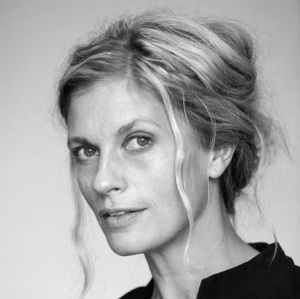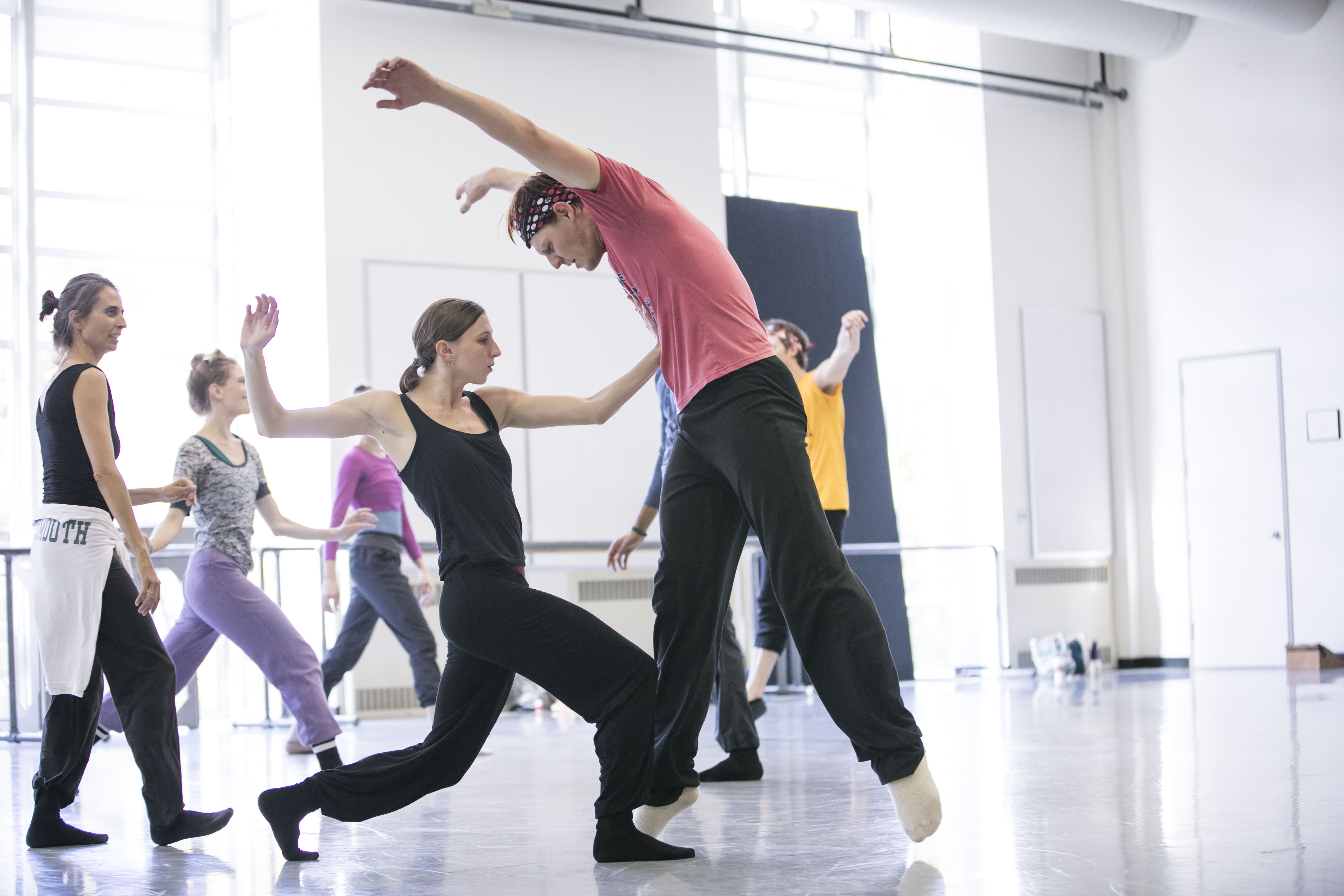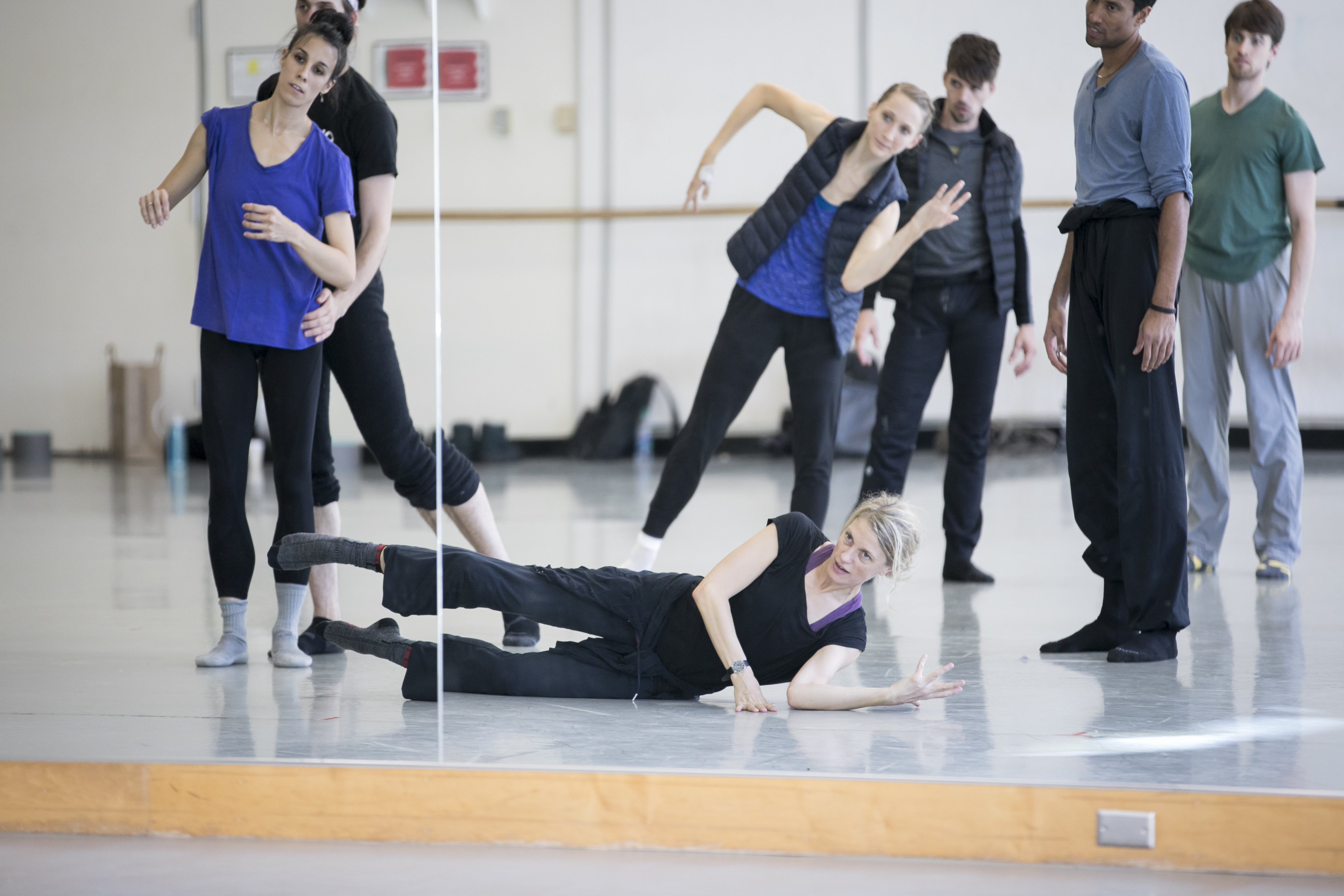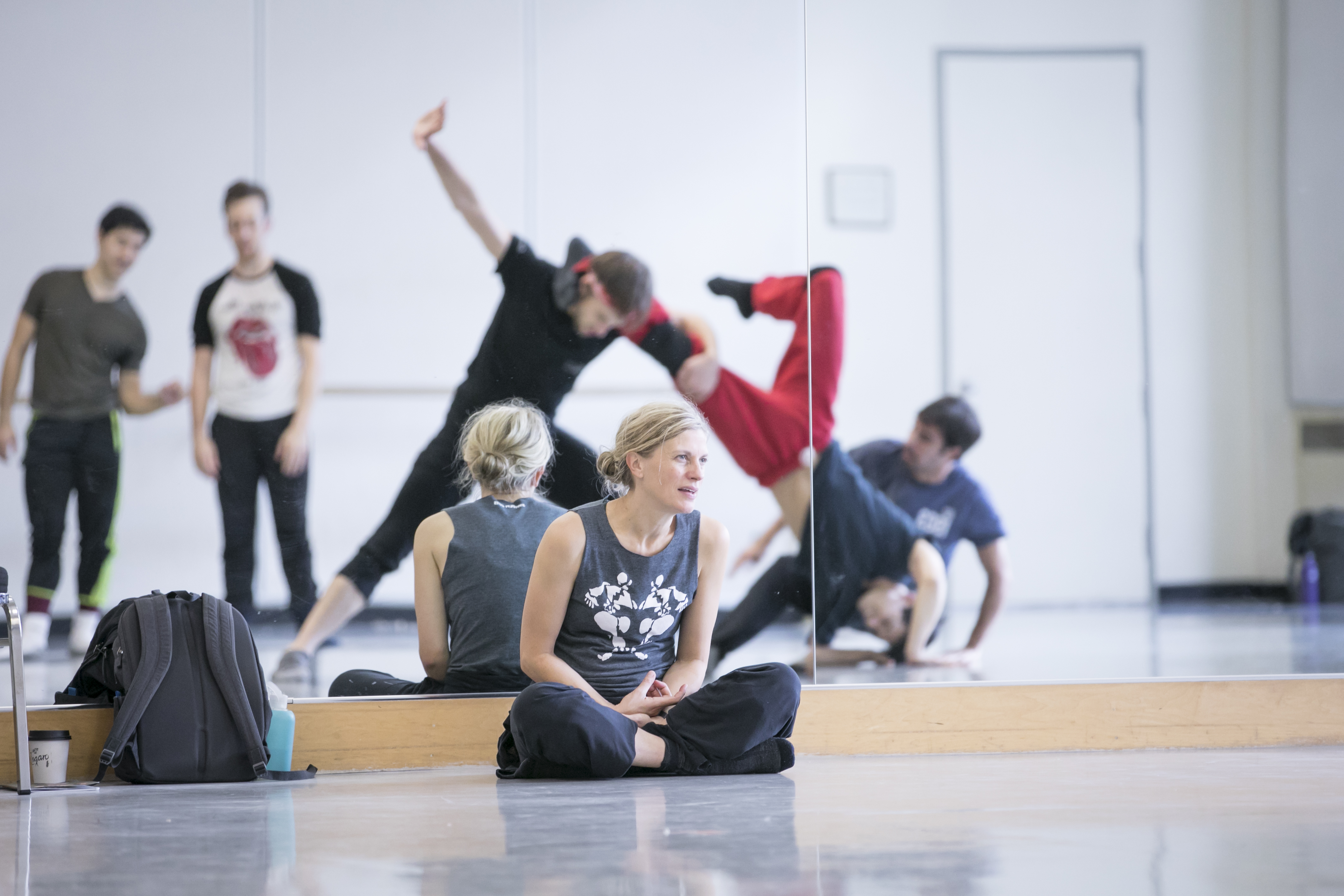GETTING TO KNOW: CRYSTAL PITE

Crystal Pite is a former company member of Ballet British Columbia and William Forsythe’s Ballett Frankfurt. She made her professional choreographic debut in 1990 with Ballet British Columbia, and has since created more than 40 works for companies including Nederlands Dans Theater (where she has been an Associate Artist since 2008), Paris Opera Ballet, the Royal Ballet, Cullberg Ballet, Ballett Frankfurt, the National Ballet of Canada, and Les Ballets Jazz de Montréal (where she was Resident Choreographer 2001–04).
When, where, and for whom did you choreograph Plot Point?
I first choreographed Plot Point for the Netherlands Dance Theatre in 2010. By the time I had started the project, I was in way over my head. I remember really struggling in that process and feeling like I couldn’t catch up with the material – I wasn’t in control of it. You always want to have the sense that you’re chasing something when you’re creating, but it was really this beast. I was urgent and reckless and I couldn’t manage it for the longest time. And in fact, by the time the piece premiered I was still feeling that way, I felt like I had something that had a lot of potential and that was pretty potent, but I hadn’t quite tamed it in a sense. So, it’s really a pleasure to revisit it again seven years later. I’ve done a lot of editing on it and some clarifying and some distilling so I’m hoping that it’s a little bit more cogent and clear this time around.

What was your ambition for the project?
I’ll start at the beginning. It’s rare that that I have the chance to work with live orchestra, and in this particular program at NDT we were given the chance to work with orchestra, so I had to choose something the orchestra could play. I gravitated towards film scores, and I was already a fan of Bernard Hermann and had used his music in another project. I listened to the film score for the movie Psycho, and of course there’s the super famous shower scene piece, but the rest of the score is absolutely beautiful and evocative and haunting and moving so I thought I would try choreographing to that. I like film scores because they’re built to support action, they’re built to kind of wring a lot of emotion out of a particular moment, so I think they work particularly well for dance.
So having chosen a film score I naturally started thinking about story and actually screenplay. I started to do what you’re never supposed to do when you’re making a screenplay, which is to make a storyboard before you have a story. My partner Jay and I, we built a maquette and we sketched out some environments we thought were interesting – a scene of a street, an interior of a building, exterior of a building, a forest, a beach. And we put these environments on stage long before we had any story in place. You know those little white plastic people that are used in architectural models to give a sense of scale? I wanted performers on stage who looked like that. And so, I came up with what I now call “The Replicas,” which are these kind of models, or figures, that represent a larger story.
As I worked in this maquette, I was really struck by how potent those little figures were. And how much story was in their body, in their simple gesture and posture and stance. And – so that’s why I wanted to make a piece that had a kind of duality, there would be the sketched-out storyboard and then there would be coexisting, the sort of more flushed out what I call “The Real-World” characters that would deliver the emotion of the story.

When audiences come into the theater, should they be expecting a story with a beginning, middle, and end?
Plot Point is about story – I’m using some structures of narrative, and some recognizable fragments of narrative, and some tropes, to evoke the idea of story, but I’m not necessarily trying to get any one particular story out there. Big themes, like love, betrayal, pursuit, revenge, rescue. These big stories kind of bubble up through the piece in recognizable ways, but the stories are very simple and very recognizable. I really enjoyed the research and the reading I did about screenplay, and the kind of three act structure, and certain kinds of truth in story building, and I wondered if I could translate that into choreography.

Crystal Pite and PNB Dancers. Photo by Lindsay Thomas.
How can audiences tell the difference between the real-life characters and the replicas?
Each character has kind of a double. If we talk about the real-world characters being recognizable people, with costumes that have color in them, then their double is all white, a monochromatic palette in the costuming, plus their heads are covered, so they’re faceless. What really struck me when I started working with the replica characters was how much emotion was still in the body, even removing the facial expressions from the image. If you’re looking at the replica and her real-world counterpart, there will be moments where they dance in unison and you really see the connection. You can really see the contrast between the very crystalline, stop motion movement of the replica characters, and then the real-world character is more flow, also more messy and more vulnerable. They always look like they’re a little bit more at risk in their movement. One of the things I’m going to do in this new version is to draw more connection between the real-world character and the replica so they have more contact and more clear visual relationship on stage.
Essentially: If the configurations and the gestures of the replicas sketch out the essential plot points of a narrative, then their corresponding characters embody the emotional tone and tension of those moments – the real-world characters literally flesh it out.
SEE CRYSTAL PITE’S PIECE PLOT POINT IN OUR PROGRAM HER STORY, RUNNING NOVEMBER 3–12 AT MCCAW HALL.
Interview conducted by Lindsay Thomas and transcribed & excerpted by Karya Schanilec.





